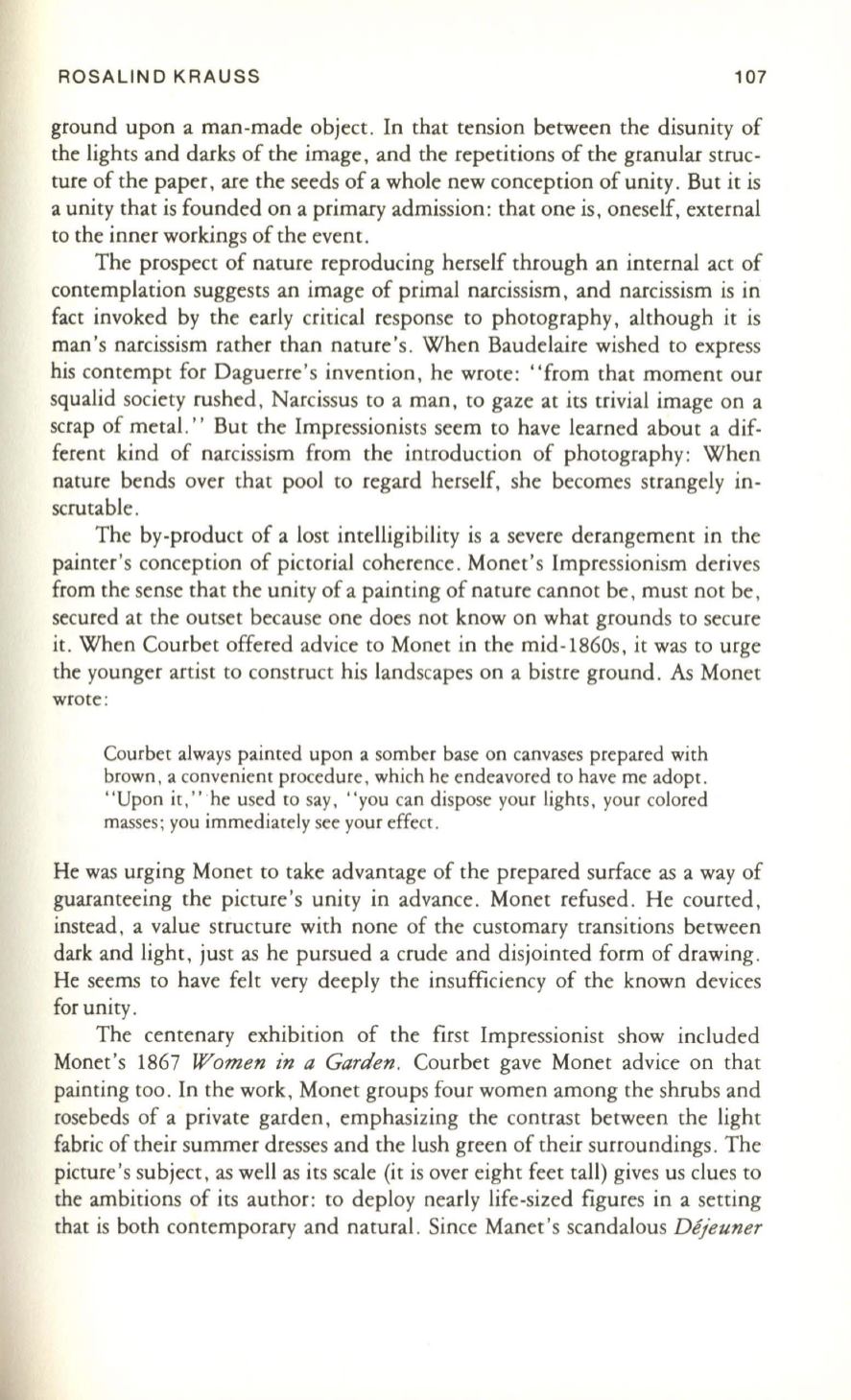
ROSALIN D KRAUSS
107
ground upon a man-made object. In that tension between the disunity of
the lights and darks of the image, and the repetitions of the granular struc–
ture of the paper, are the seeds of a whole new conception of unity. But it is
a unity that is founded on a primary admission : that one is, oneself, external
to the inner workings of the event.
The prospect of nature reproducing herself through an internal act of
contemplation suggests an image of primal narcissism, and narcissism is in
fact invoked by the early critical response to photography, although it is
man's narcissism rather than nature's. When Baudelaire wished to express
his contempt for Daguerre's invention, he wrote: "from that moment our
squalid society rushed, Narcissus to a man, to gaze at its trivial image on a
scrap of metal. " But the Impressionists seem to have learned about a dif–
ferent kind of narcissism from the introduction of photography: When
nature bends over that pool to regard herself, she becomes strangely in–
scrutable.
The by-product of a lost intelligibility is a severe derangement in the
painter 's conception of pictorial coherence. Monet's Impressionism derives
from the sense that the unity of a painting of nature cannot be, must not be,
secured at the outset because one does not know on what grounds to secure
it. When Courbet offered advice to Monet in the mid-1860s, it was to urge
the younger artist to construct his landscapes on a bistre ground . As Monet
wrote:
Courbet always painted upon a somber base on canvases prepared with
brown, a convenient procedure , which he endeavored
to
have me adopt.
"Upon it ," 'he used
to
say , "you can dispose your lights, your colored
masses; you immediately see your effect.
He was urging Monet to take advantage of the prepared surface as a way of
guaranteeing the picture's unity in advance . Monet refused . He courted,
instead, a value structure with none of the customary transitions between
dark and light, just as he pursued a crude and disjointed form of drawing.
He seems to have felt very deeply the insufficiency of the known devices
for unity .
The centenary exhibition of the first Impressionist show included
Monet's 1867
Women in a Garden.
Courbet gave Monet advice on that
painting too. In the work, Monet groups four women among the shrubs and
rosebeds of a private garden , emphasizing the contrast between the light
fabric of their summer dresses and the lush green of their surroundings . The
picture's subject, as well as its scale (it is over eight feet tall) gives us clues to
the ambitions of its author : to deploy nearly life-sized figures in a setting
that is both contemporary and natural. Since Manet's scandalous
Dijeuner


